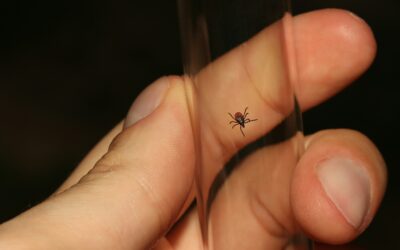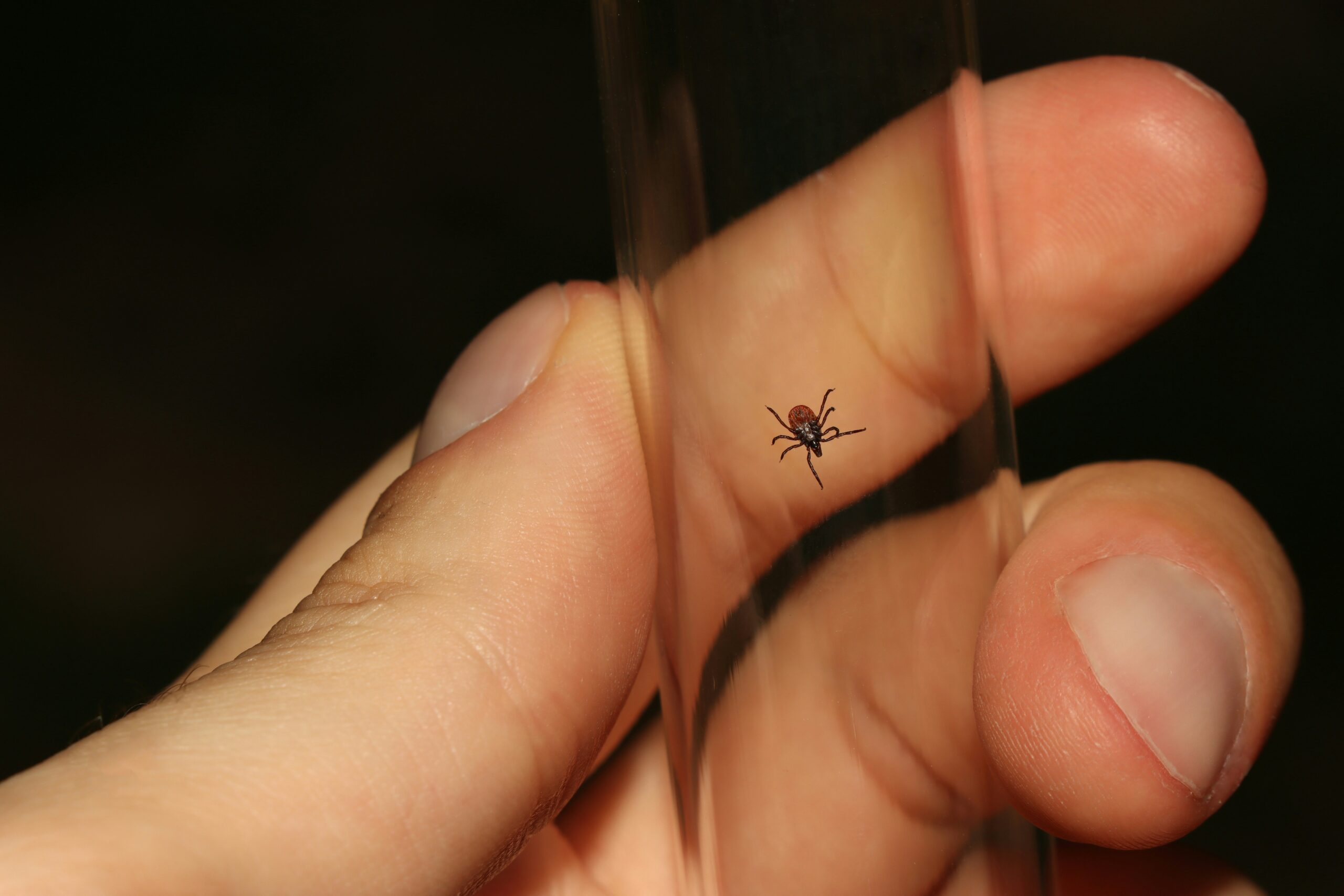FEBRUARY 2017
WHAT’S NEW
YOU’RE SWEET ENOUGH WITHOUT THE ADDED SUGAR
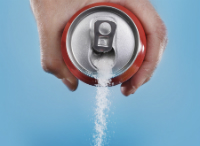
Sugar is a carbohydrate, one of the major nutrient groups, but it doesn’t provide vitamins, minerals, or even fiber to our diet. Still, it’s added to an array of foods, including ketchup, fruited yogurt, cereal, canned soup, certain brands of lunch meat, salad dressing, condiments, bread, and so much more. While we require some sugar (glucose) in order to function property, all of this added sugar is harmful to our system and quite frankly- unnecessary!
SUGAR’S ADDICTIVE QUALITIES
When we ingest sugar, our body generates a response similar to that seen in addictions, which is why we develop cravings for more. It’s often called the cocaine of dietary additives.
Here’s how it works: Sugar — whether natural, processed or artificial — enters the bloodstream quickly, causing your blood sugar level to spike. The body recognizes this imbalance and acts to bring blood sugar back to normal. Insulin, a hormone, pushes glucose into the cells to be used for energy. But if you eat a lot of sugar, the body can’t keep up. Insulin has to work harder and the body overcompensates, causing blood sugar to drop too low – and your brain reacts. You feel depleted, irritable, and crave more sugar.
SUGAR BY ANY OTHER NAME
Sugar names you might recognize are sucrose (table sugar), fructose (found in fruits, some root veggies, and honey), and lactose (milk sugar). Naturally occurring sugar in fruit and vegetables has a place in a balanced diet. But added sugar, artificial sweetener, and processed ‘natural’ sugar like high fructose corn syrup are detrimental to your health.
ELIMINATE UNHEALTHY SUGAR FROM YOUR DIET
Learn where Sugar Hides. On ingredient lists, look for words ending in ‘-ose,’ which equate to sugar. If they’re among the first five items, it’s not worth buying. When sugar is among the last items in the list, that’s a better choice.
AVOID THE FAKE STUFF. Products containing artificial sweeteners are not a healthy alternative. Diet soda, ‘fat free’ and ‘sugar free’ candy and cookies are associated with weight gain and cravings, creating a cycle of addiction.
SIP WITH AWARENESS. A single can of soda, flavored water, Gatorade, or a juice box typically contain nine or more teaspoons of sugar.
MAKE SWEET SUBSTITUTIONS. Look for snacks labeled ‘no added sugar’ or ‘unsweetened.’ Use canned foods packed in water or natural juice. When baking, swap table sugar with applesauce, date paste, molasses, or fruit puree. Cinnamon or vanilla powder is a great way to sprinkle flavor onto yogurt, oatmeal, or coffee. Opt for coconut sugar or syrup, brown rice syrup or cane sugar over other processed sugars.
Reprogram your sugar meter slowly. If you put two sugar packets in your coffee, cut back in half-packet increments. Keep sugar off the kitchen table. Small steps add up to sweet success!
REFERENCES
- Boseley, S. ‘Sugar, Not Fat, Exposed As Deadly Villain in Obesity Epidemic.’ The Guardian (March 2013). Accessed 7 Dec 2016.
- Cole, W. ‘The Connection Between Artificial Sweeteners & Autoimmune Disease. ’Posted by mindbodygreen.com (with references) Accessed 19 Dec 2016.
- Schiffman, S. ‘Rationale for Further Medical and Health Research on High-Potency Sweeteners.’ Chemical Senses (2012, May 4) Schiffman Consulting, 18 Heath Place, Durham, NC 27705-5713, USA. Accessed 19 Dec 2016.
- American Association of Clinical Endocrinologists (AACE). ‘Cause and Effect: Case Report Shows an Association between Sugar Substitutes and Common Thyroid Disorder.’ Accessed 19 Dec 2016.
- Psych Today Online. ‘Just Say No to Artificial Sweeteners.’ Accessed 19 Dec 2016.
FOOD FOR THOUGHT. . .
“Health is like money, we never have a true idea of its value until we lose it.” – Josh Billings
DATES: AN ANCIENT TREAT FOR MODERN TIMES
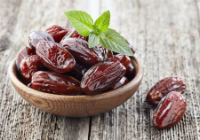
Dates are used in vinegars, chutneys, butters, paste, and as a natural sweetener. Dates satisfy a sweet tooth without adding fat to your diet. When eating raw dates, mix them with raw nuts and seeds or add to a raw cream cheese – spread it on brown rice cakes for a yummy, nutritious snack. They’re the perfect snack to take on a long hike or for one of those days when you’re on the run and might need a quick pick-me-up.
REFERENCES
- Medjool Dates – Nutrition Data. Accessed 2 Dec 2016.
- University of California-Davis, Plant Sciences. Accessed 2 Dec 2016.
- Chao, C. & Krueger, R. ‘The Date Palm (Phoenix dactylifera L.): Overview of Biology, Uses, and Cultivation.’ HortScience (August 2007) 42:5. 1077-1082. Accessed 4 Jan 2017. (see section within this article: uses of dates and date palms)
- Al-Shahib, W. & Marshall, R.J., ‘The fruit of the date palm: its possible use as the best food for the future?’Int J. Food Science Nutri. (2003, Jul), 54:4, 247-59. Accessed 2 Dec 2016.
- Types of Dates (with photos, descriptions). Accessed 4 Jan 2016.
DATE PASTE: THE ULTIMATE ALL NATURAL SWEETENER
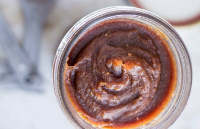
Cinnamon is available ground, in capsule form, and as a tea. There are many species of cinnamon. Be aware that typical grocery store cinnamon (‘the cassia cinnamons’) contains coumarin, which, in high amounts, can be harmful to the liver. Ceylon Cinnamon has lower levels of coumarin, which makes it a better choice for most people.
SELENIUM: A CRITICAL MINERAL
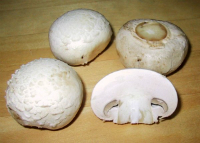
While selenium occurs naturally in most foods, because of our modern agricultural practices, many of our foods are not as mineral rich as they used to be. For some of us that could mean selenium deficiency; look for these signs: weakness and pain in the muscles, discoloration of hair and skin, and whitening of the fingernail beds.
To increase your selenium levels naturally, try eating more button mushrooms, Brazil nuts, and sunflower seeds. Consuming too much selenium through food is not likely, with the exception of large consumption of Brazil nuts.
If you have signs of selenium deficiency, and before increasing your intake through a supplement, be sure to consult your holistic healthcare practitioner to ensure proper levels. Selenium toxicity can cause nausea, vomiting, hair loss, skin lesions, abnormalities in the beds of the fingernails, and fingernail loss.
REFERENCES
- WHFoods.com. ‘Selenium’. (accessed Dec 18, 2016).
- Badmaev V, Muhammed M, Passwater RA. Selenium: a quest for better understanding. Alt Ther 1996;2(4):59-67. 1996.
- Diplock AT. Selenium, Antioxidant Nutritions, and Human Diseases. Biol Trac Elem Res. 1992;33:155-156. 1992.
- National Research Council. Selenium in Nutrition. Revised edition. Board on Agriculture, Committee on Animal Nutrition, National Academy of Sciences Press, Washington, DC, 1983. 1983.
- Vogt, T. M. Ziegler, R. G. Graubard, B. I et al. Serum Selenium and Risk of Prostate Cancer in U.S. Blacks and Whites. Int J Cancer. 2003 Feb 20; 103(5):664-70. 2003.
NATURE’S SWEET HERB: CINNAMON (Cinnamomum verum)
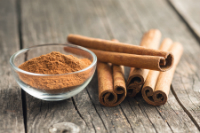
Osha contains antiviral and antibacterial compounds that can relieve inflammation in the bronchial tubes. It helps alleviate symptoms such as sore throat, sinus congestion, and cough, and has been used to treat bronchitis, flu, and pneumonia. Take it as soon as your symptoms appear and when you are coughing and sneezing the most. That’s when it seems to be the most effective. Prepare a tea from crushed and dried Osha Root or mix root extract with honey to make a cough syrup.
Osha grows in a limited region in the U.S. so it can be hard to find in typical grocery stores. Ask for it in specialty or natural foods grocers or look for it online from a source that specializes in the herb. If you’re unsure about the source, don’t buy it (or pick it in the wild), as Osha leaves resemble Hemlock, a poisonous plant.
Many factors determine the appropriate amount of Osha to take, including a person’s age, weight, and symptoms. Women who are pregnant or breastfeeding should not take Osha root. Talk with your holistic healthcare professional before taking Osha Root.
REFERENCES
- Cleveland Clinic: Cinnamon. Accessed 2 Dec 2016.
- Examine.com: Cinnamon Essential Benefits, Effects & Information. Accessed 2 Dec 2016.
- World’s Healthiest Foods: Cinnamon (ground)
- Johannes, L. Little bit of Spice for Health, but Which One? The Wall Street Journal (online, 2014, Oct.) Accessed 4 Dec 2016.
- Hlebowicz, J. et al., ‘Effect of Cinnamon on Postprandial Blood Glucose, Gastric Emptying, and Satiety in Healthy Subjects.’ Am J Clin Nutr. (2007 Jun) 85:6,1552-6. Accessed 4 Dec 2016.
HEALTHY EATING THROUGH COGNITIVE- BEHAVIORAL THERAPY

THE EUSTACHIAN TUBE’S JOB IS TO:
WHY WE CRAVE
Food craving, particularly for sweets, is more involved than not being able to resist a second slice of chocolate cake. Researchers have discovered that ‘intense sweetness’ (from sugar or artificial sweetener) creates a biochemical change in the brain that is a lot like the response to addictive substances. Sugar actually alters the dopamine network – part of the brain’s ‘pleasure response.’ Other factors that play a role in the food we crave include stress, family habits, where we eat and whom we eat with, and time of day.
CURING THE CRAVINGS
Our thoughts affect how we feel, and how we feel affects our actions and the choices we make. If you’re struggling with food choices and having a hard time managing sugar intake, consider cognitive-behavioral therapy (CBT). Working with a psychotherapist trained in CBT, you’ll learn to identify and change thoughts that influence emotions. You’ll develop insight into how even the smallest choices allow a behavior to persist and what is getting in the way of changing your patterns.
In a CBT session, clients use educational exercises, talk therapy, and simulations to change behavior. Sessions usually involve intense work over several weeks to arrive at effective solutions. If you’re struggling with cravings, depression, anxiety or addiction, give CBT a chance. It could make all the difference in your way of life.
REFERENCES
- National Association of Cognitive-Behavioral Therapists. ‘What is CBT?’ Accessed 5 Dec 2016.
- Ahmed, S.H., Guillem, K., Vandaele, Y., ‘Sugar Addiction: Pushing the Drug-Sugar Analogy to the Limit.’ (2013, July) 16:4, 434-9. Accessed 5 Dec 2016.
- Dmitrijevic, L. Popovic, N. et al., ‘Food Addiction Diagnosis and Treatment.’ Psyiatry Danub. (2015) 27:1, 101-6. Accessed 5 Dec 2016.
- DiabetesSelfManagement.com ‘CBT’ Accessed 5 Dec 2016.
- MacGregor, G. & Pombo, S., ‘The Amount of Hidden Sugar In Your Diet Might Shock You.’ (posted at TheConversation.com, January 2014). Accessed 5 Dec 2016.
GUIDING PRINCIPLES

First Do not Harm

Identify and Treat the cause

Healing Power of Nature

Doctor as Teachers

Treat the Whole

Prevention is best Medicine
Follow us on instagram
BLOG
Become an educated consumer with our Indigo Blogs and prevent dis-ease.
Our Doctors have been featured in:
